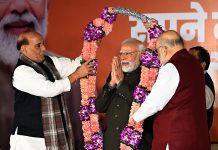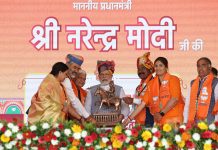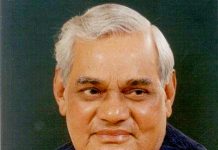The unprecedented step of holding a press conference by four senior judges of the Supreme Court on January 12 to air their grievances, which were presumably being ignored by the Chief Justice of India, is being touted as both a momentous and an unfortunate development in the annals of judicial history of independent India. It becomes discernible from media reports that the crux of the matter is a basic issue — whether the CJI is ‘master of the roster’ or just ‘first among equals’. Text of the letter addressed to CJI Dipak Misra and released at a press conference seemingly makes it discernible that the senior apex court judges were spurred to go public because of being ignored while setting up benches to hear crucial cases as well as attempts to sort out the matter with the CJI going nowhere.
The action has evoked a divided opinion. Protagonists say the four judges have shown courage as they were compelled to speak out because ‘democracy will not survive unless the institution of the Supreme Court is preserved’. However, the antagonists opine that such kind of public ‘unionism’ is mutinous and inappropriate.
Irrespective of long-term implications of this move, some legal experts opine that it has exposed an unprecedented level of dissension in the top echelons of the judiciary, the reverberations of which will not easily subside and will be felt for a long time to come.
 Unprecedented Development
Unprecedented Development
The press conference is an unprecedented development in multiple ways. Apart from being a singular such development in the judicial history of independent India, it has brought to the fore the much talked-about chinks in the top judiciary over a range of issues, including the manner in which the CJI allocated cases to his fellow judges in his capacity as ‘master of the roster’. It was also argued that the CJI had gone against the well-settled and time-honoured conventions guiding him in deciding the roster and allocation of cases to brother judges. In other words, at the heart of the present crisis there are two issues: how judges are appointed and how sensitive and big-ticket cases are allocated.
A controversial order by the apex court in November 2017 had declared that the CJI ‘is the master of roster’ having exclusive power to decide which case would go to which judge. However, the letter released at the press conference contends that the CJI is only ‘first among equals’ and there were well-settled and time-honoured conventions guiding him in dealing with the strength of the bench required or the composition thereof.
Undoubtedly, legal experts and media have dubbed the episode as ‘unprecedented’. Nevertheless, an gitation of near-equal proportion did occur in the Punjab and Haryana High Court over 13 years ago when, on April 18, 2004, 25 judges allegedly went on casual leave en masse to protest against the then Chief Justice B K Roy, who had sought an explanation from two judges for accepting membership at a golf resort near Chandigarh even though it was facing litigation for violation of environmental norms, among others.
Independent vs. Committed Judiciary
Some legal experts opine that undoubtedly at the surface level the ongoing controversy may be confined to the attribution of motives to both the CJI and the four aggrieved judges in terms of a post mortem of case allocations by the chief justice, and the casting of aspersions on the abilities of some judges to whom the CJI has assigned cases; nonetheless, what lies beneath are more serious questions and the attribution of more insidious motives. In the aftermath of the ongoing developments, the Supreme Court of India may never be the same again, irrespective of whether the act of the four judges is seen as a revolt or a move towards transparency or whether it is justified or not. While the ongoing development amounts to a no-confidence motion against the top-most judge of the country and the ability of the Supreme Court to fix its own problems, the manner in which institutional weaknesses have been exposed entail the possibility of determining whether the subsequent moves would be constructive or destructive.
Asserting the difficulty in telling whether the ongoing developments will lead to a stronger Supreme Court or one weakened by a combination of infighting, questionable procedures, and opacity, it can’t be said whether the present dispensation will take advantage of the weakness or work towards restoring the institution to strength. However, some legal experts do not rule out the possibility of the government taking advantage of a weakened judiciary, at least in the short term.
The executive-judiciary balance has been determined to a very large extent by the nature of political dominance the ruling party of the day could command from the very beginning in the1950s and it was only in the mid-1990s that the judiciary stonewalled itself sufficiently against the vagaries of the politician’s world. The manner of handling the case of the death of special CBI judge BH Loya, who was hearing the Sohrabuddin ‘fake encounter’ case in which BJP president Amit Shah was an accused but later discharged, is looked upon with suspicion by some experts and raises doubts about independence of the judiciary.
The decade of the 1970s witnessed attempts by the then government to have a ‘committed judiciary’ especially when Justice AN Ray was appointed, superseding three other senior judges, and second, when Justice MH Beg was appointed superseding Justice HR Khanna. Even in those times, the sanctity of the court didn’t come into jeopardy, in the same sense as it is now, because those events were the doings of the executive of that day and the present crisis is the manifestation of the inbred problem within the apex court. A committed judiciary suits the ambitions of the ruling dispensation to implement its ‘unconstitutional agenda’ in a constitutional manner.
Way Forward
Many legal experts opine that the present crisis isn’t a political issue and parties of all hues would do well to steer clear of it. Let the apex court resolve its issues in its own manner sans political interference so that its independence is not jeopardised. The Supreme Court is one of the country’s most respected institutions — and one in which a majority of Indians still continue to repose tremendous trust. It is in the fitness of things for the CJI to take the initiative and reach out to his colleagues.
The present crisis also affords an opportunity for the court as well as the government to finalise a mutually-acceptable and transparent process to appoint judges, which, while not being raised by the four judges, remains a contentious topic and one that, if not responsible for the current crisis, at least exacerbated it. Democracy functions through institutions and the judiciary is an important pillar of India’s constitutional democracy, enjoying people’s confidence. One can hope that the apex court will be able to find means of tiding over the present crisis and restoring people’s confidence sooner than later.
letters@tehelka.com













